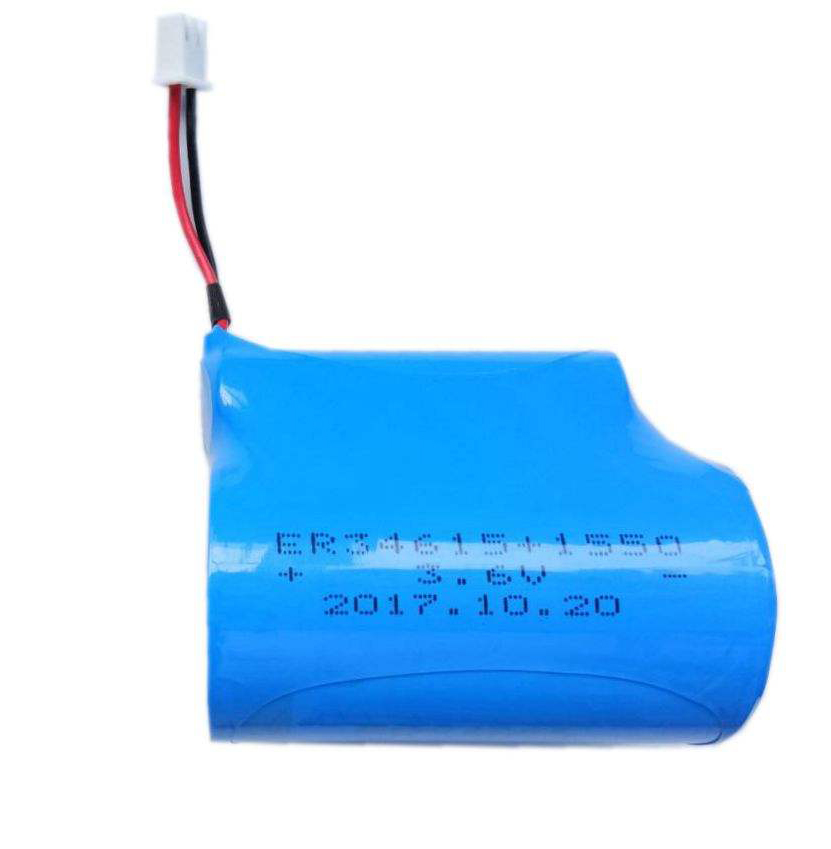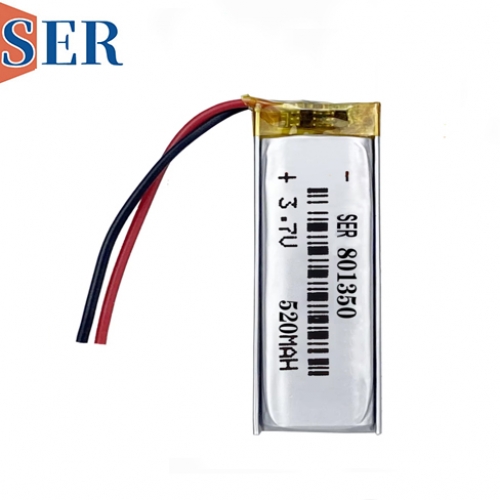3.6V Batteries (LiSOCl₂ AA ER14505) with Lithium Super Capacitors (HPC1520) for IoT Products
3.6V Batteries (LiSOCl₂ AA ER14505) with Lithium Super Capacitors (HPC1520) for IoT Products

Introduction
The Internet of Things (IoT) has revolutionized the way we interact with devices and systems, enabling seamless connectivity and data exchange between various objects and appliances. As IoT devices become increasingly sophisticated and integrated into our daily lives, the demand for reliable, efficient, and long-lasting power sources has grown exponentially. In this context, the combination of 3.6V batteries (specifically LiSOCl₂ AA ER14505) and lithium super capacitors (such as HPC1520) presents a compelling solution for powering IoT products. This article delves into the specifics of these components, exploring their characteristics, benefits, and integration into IoT systems. Additionally, we will discuss the ER14505-3P battery pack with SPC1520 super capacitors, highlighting the advantages of using these components in parallel for IoT applications.
Understanding 3.6V Batteries (LiSOCl₂ AA ER14505)
3.6V batteries, particularly those utilizing lithium sulfuryl chloride (LiSOCl₂) chemistry, have gained prominence in the realm of IoT due to their high energy density, stable discharge voltage, and excellent shelf life. The LiSOCl₂ AA ER14505 is a specific type of these batteries, designed in the AA form factor, commonly used in various electronic devices.
Chemistry and Operation
LiSOCl₂ batteries operate on the principle of lithium-ion transfer between the anode (lithium metal) and the cathode (carbon with an intercalated sulfuryl chloride electrolyte). During discharge, lithium ions migrate from the anode to the cathode through the electrolyte, generating electricity. The ER14505 variant offers a nominal voltage of 3.6V, making it an ideal choice for devices requiring a consistent and reliable voltage source.
Advantages
High Energy Density: LiSOCl₂ batteries offer a high energy-to-weight ratio, allowing for longer operational times between replacements.
Stable Discharge Voltage: The discharge voltage remains relatively stable throughout the battery's life, ensuring consistent performance in IoT devices.
Excellent Shelf Life: These batteries can retain their charge for extended periods, making them suitable for devices that may not be used frequently.
Wide Operating Temperature Range: LiSOCl₂ batteries can operate within a broad temperature range, making them versatile for various environmental conditions.
Applications in IoT
The LiSOCl₂ AA ER14505 batteries are well-suited for IoT devices that require long-term, reliable power sources. These include:
Sensors: Used in smart homes, industrial monitoring, and environmental sensing.
Wearables: Such as fitness trackers, smartwatches, and health monitoring devices.
Remote Controls: For smart TVs, home automation systems, and other remote-controlled appliances.
Tracking Devices: GPS trackers for pets, assets, and logistics.
Integration Challenges
While LiSOCl₂ batteries offer numerous advantages, they also present some challenges when integrated into IoT devices:
Non-Rechargeable Nature: These batteries are primary cells, meaning they cannot be recharged. Once discharged, they must be replaced, which can increase maintenance costs and operational complexity.
Limited Cycle Life: Although their shelf life is excellent, the number of discharge-recharge cycles is zero, limiting their use in applications requiring frequent charging.
Introducing Lithium Super Capacitors (HPC1520)
To address the limitations of LiSOCl₂ batteries, lithium super capacitors, such as the HPC1520, offer a complementary solution. These devices store energy in an electric field rather than through chemical reactions, providing high power density and long cycle life.
Chemistry and Operation
Lithium super capacitors utilize a lithium-ion electrolyte and porous electrodes to store charge. Unlike traditional capacitors, which store energy in the electric field between two plates, lithium super capacitors store energy in the double layer formed at the electrode-electrolyte interface. This allows for higher energy density and faster charge-discharge rates.
Advantages
High Power Density: Lithium super capacitors can deliver high currents quickly, making them ideal for applications requiring rapid energy release.
Long Cycle Life: These devices can undergo many charge-discharge cycles (often in the tens of thousands to hundreds of thousands) without significant degradation.
Fast Charging and Discharging: Lithium super capacitors can charge and discharge in seconds to minutes, providing instant power when needed.
Wide Operating Temperature Range: Similar to LiSOCl₂ batteries, lithium super capacitors can operate within a broad temperature range, enhancing their versatility.
Applications in IoT
Lithium super capacitors are particularly useful in IoT devices where burst power is required or where frequent charging is impractical. Applications include:
Peak Power Assistance: Providing instantaneous power to IoT devices during high-demand periods, such as when sensors transmit data or actuators perform actions.
Backup Power: Serving as a secondary power source to bridge gaps between primary power supplies, such as during battery replacements or power outages.
Energy Harvesting Systems: Capturing and storing energy from ambient sources (e.g., solar, vibration) and releasing it on demand.
Integration with LiSOCl₂ Batteries
Combining LiSOCl₂ batteries (like the ER14505) with lithium super capacitors (such as HPC1520) creates a powerful and versatile power solution for IoT devices. Here's how these components can be integrated:
Hybrid Power System Design
A hybrid power system combines the high energy density of LiSOCl₂ batteries with the high power density and long cycle life of lithium super capacitors. In such a system, the battery serves as the primary power source, providing continuous power to the IoT device. The super capacitor acts as a secondary power source, delivering burst power or bridging gaps during battery replacement.
Battery Management System (BMS): A BMS is crucial for monitoring and managing the battery's state of charge, ensuring optimal performance and safety. It can also control the charging and discharging of the super capacitor.
Energy Harvesting Integration: If energy harvesting is incorporated into the IoT device, the super capacitor can store the harvested energy and release it as needed, reducing the reliance on the primary battery.
Circuit Design and Connectivity
The integration of LiSOCl₂ batteries and lithium super capacitors requires careful circuit design to ensure efficient energy transfer and device operation. This includes:
Power Conversion Circuits: Circuits that convert the battery's DC voltage to the required levels for the IoT device and super capacitor.
Charging Circuits: Circuits that safely and efficiently charge the super capacitor using the battery or harvested energy.
Protection Circuits: Circuits that protect the battery and super capacitor from overcharge, over-discharge, and short circuits.
Connectors and Interfacing
Proper connectors and interfacing are essential for integrating LiSOCl₂ batteries and lithium super capacitors into IoT devices. This includes:
Battery Connectors: Connectors that securely and reliably attach the battery to the IoT device's power circuit.
Super Capacitor Connectors: Connectors that allow for easy and secure connection of the super capacitor to the power management system.
Interface Protocols: Protocols for communicating between the battery, super capacitor, and IoT device's main controller, ensuring seamless operation and energy management.
ER14505-3P with SPC1520 Super Capacitors: A Comprehensive Solution
The ER14505-3P battery pack, combined with SPC1520 super capacitors, offers a robust and versatile power solution for IoT devices requiring high energy and power density.
Battery Pack Specifications
The ER14505-3P battery pack consists of three LiSOCl₂ ER14505 batteries connected in parallel. This configuration provides:
Increased Capacity: The total capacity is approximately three times that of a single ER14505 battery, extending the operational time of IoT devices.
Stable Voltage Output: The parallel connection maintains a stable voltage output, ensuring consistent performance.
Redundancy: In the event of one battery failing, the other two can continue to provide power, enhancing system reliability.
SPC1520 Super Capacitor Integration
The SPC1520 super capacitors complement the ER14505-3P battery pack by providing burst power and energy bridging capabilities. The integration involves:
Series or Parallel Connection: Depending on the required voltage and capacitance, the SPC1520 super capacitors can be connected in series or parallel to match the IoT device's power needs.
Charging and Discharging Circuits: Circuits designed to efficiently charge the super capacitors using the battery pack and to discharge them as needed, providing burst power or bridging gaps.
BMS Integration: The BMS must be capable of monitoring and managing both the battery pack and the super capacitors, ensuring optimal performance and safety.





